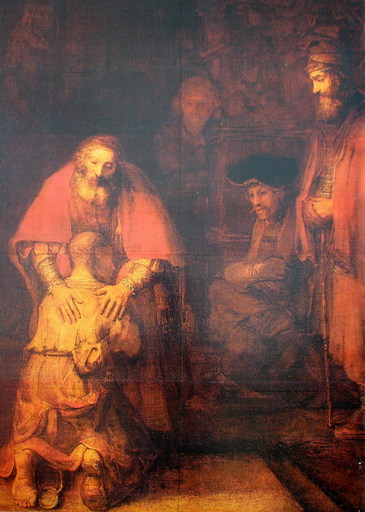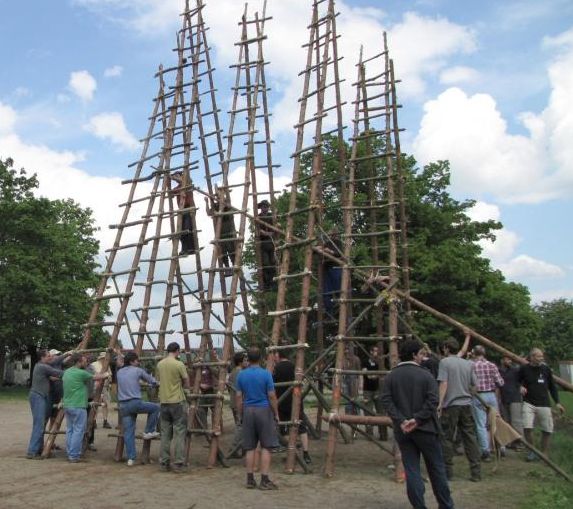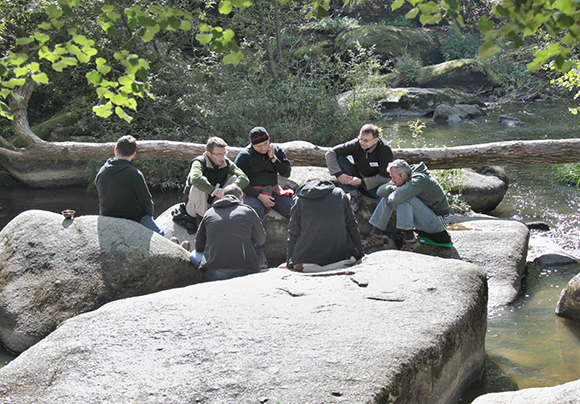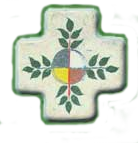
Starý muž, který se neumí smát, je trouba.
Richard Rohr
Kdo jsme?
Tento web reprezentuje hnutí Chlapi, neformální společenství mužů, kteří hledají takové způsoby duchovního prožívání, se kterými se dokážou jako muži ztotožnit a celou bytostí je žít.
Můžeš se tady setkat s muži, kteří usilují o to být lepšími a více autentickými.
Vytváříme jak reálný tak virtuální prostor pro setkávání.
Začalo to někdy před rokem 2000 hledáním mužské energie, spirituality i chlapské party a setkáváním v malých skupinách. Pokračovalo to inspirací dílem Richarda Rohra a jeho Rituálem pro přechod do zralé dospělosti a pokračuje to dodnes stovkami setkání v malých skupinách, víkendovými akcemi pro muže i pro otce a děti, rituály i celostátními setkáními pro stovky účastníků a mezinárodní spoluprací s hnutím mužů po celém světě.
Pro řadu z nás je podstatné přátelství s Bohem, pro všechny jsou oporou kamarádi, které tu nalezli.
Vítáme tě mezi námi a těšíme se na společné putování.

Pavel Hrdina a Martin Šmídek
Překlad meditace CAC ze čtvrtka 27. 2. 2025
na téma:
Rýnští mystikové
| John Ruusbroec: Boj o lásku Jezuitský učenec Harvey Egan píše o nizozemském mystikovi Janu Ruusbroecovi: John Ruusbroec, "Obdivuhodný", [1293-1381] je označován za největšího kontemplativního a mystického spisovatele křesťanské tradice. Byl také chválen jako nejvýmluvnější trinitární mystik Západu, jemuž se v jeho schopnosti popsat jednotný život nic nevyrovná. Přesto, když jsou ti, kdo něco vědí o křesťanské tradici, požádáni, aby vyjmenovali velké mystiky, jen zřídkakdy je Ruusbroec jmenován na prvním místě, pokud je vůbec jmenován. John se narodil v Ruusbroecu v jižním Brabantsku, asi pět mil od Bruselu. Když mu bylo 11 let, odešel žít ke svému strýci, který byl kanovníkem [starším knězem] bruselské katedrály…. Ruusbroec byl vysvěcen ve 24 letech a strávil 26 let v kostele sv. Guduly. Zde udržoval úzké kontakty s místními beguíny. V 50 letech odešel Ruusbroec … na odpočinek za kontemplativnějším životem do lesa Soignes, Groenendaal (zelené údolí), kousek od Bruselu..... Zde Ruusbroec žil "bohulibým" životem 38 let, než ve věku 88 let zemřel. [1] James Finley doporučuje číst Jana Ruusbroce a jemu podobné mystiky rozvážným, kontemplativním stylem četby: Když se podíváme na spisy tohoto mystika, to, kvůli čemu podle mého názoru stojí za to ho číst, je poetická výmluvnost jeho jazyka. Je prostě znamenitý. V některých pasážích dosahuje určité vznešenosti. Je to jeho dar vyjádřit slovy tyto velmi jemné stavy jednoty s Bohem. Můžete si ho číst po odstavcích, načrtnout si ho a sedět s ním, vnímat ho, procházet se s ním; je to jako bohatá vnitřní krajina probuzeného srdce, velmi pečlivě nuancované, bohaté a uzemňující místo. [2] Vyzýváme vás, abyste využili Finleyho návod k posezení s touto pasáží ze slavného Ruusbroecova textu Božské eseje, v níž popisuje důvěrné spojení s Bohem "bez rozdílu": V této bouři lásky zápasí dva duchové - Duch Boží a náš duch. Bůh se prostřednictvím Ducha svatého sklání [k nám], a my jsme tak dotčeni v lásce; náš duch se prostřednictvím Boží činnosti a milostné síly podněcuje a sklání k Bohu, a tím se dotýká Boha. Z těchto dvou pohybů vzniká boj lásky, neboť při tomto nejhlubším setkání, při tomto nejintimnějším a nejvroucnějším setkání je každý duch zraněn láskou. Tito dva duchové, tedy náš duch a Boží duch, na sebe vrhají zářivé světlo a každý z nich odhaluje tomu druhému svou tvář. To způsobuje, že oba duchové o sebe neustále usilují v lásce. Každý od druhého vyžaduje to, čím je, a každý druhému nabízí a vyzývá ho, aby přijal to, čím je. Díky tomu se tito milující duchové jeden v druhém ztrácejí. Boží dotek a jeho dávání sebe sama spolu s naším usilováním v lásce a naším dáváním sebe sama na oplátku - to je to, co staví lásku na pevný základ. [3] James Finley přeloženo DeepL | John Ruusbroec: The Struggle for Love
Jesuit scholar Harvey Egan writes about the Dutch mystic John Ruusbroec: John Ruusbroec, “the Admirable,” [1293–1381] has been called the greatest contemplative and mystical writer in the Christian tradition. He has also been praised as the most articulate trinitarian mystic of the West, unmatched in his power to describe the unitive life. Yet, if those who know something about the Christian tradition are asked to list the great mystics, rarely is Ruusbroec named first—if he is named at all. John was born in Ruusbroec, South Brabant, about five miles from Brussels. When he was 11 years old, he went to live with an uncle of his who was a canon [senior priest] of a Brussels cathedral…. Ordained at the age of 24, Ruusbroec spent 26 years at St. Gudula’s. There he maintained close contact with the local Beguines. At 50 years of age, Ruusbroec … retired for a more contemplative life to the forest of Soignes, Groenendaal (green valley), just outside of Brussels…. Here Ruusbroec lived the “God-seeing” life for 38 years before dying at the age of 88. [1] James Finley recommends that we read John Ruusbroec and mystics like him with a deliberate, contemplative reading style: When we look at these writings of this mystic, what makes him so worth reading in my mind is the poetic eloquence of his language. It’s just exquisite. There are certain passages where he reaches a certain sublime altitude. It’s his gift to put words to these very subtle unitive states of oneness with God. You can read him one paragraph at a time, outline it and sit with it, take it in, walk with it; it’s like a rich inner landscape of the awakened heart, a very carefully nuanced, rich, and grounding place. [2] We invite you to use Finley’s instructions to sit with this passage from Ruusbroec’s famous text The Divine Espousals, in which he describes intimate union with God “without difference”: In this storm of love two spirits struggle—the Spirit of God and our spirit. God, by means of the Holy Spirit, inclines [Godself] toward us, and we are thereby touched in love; our spirit, by means of God’s activity and the amorous power, impels and inclines itself toward God, and thereby God is touched. From these two movements there arises the struggle of love, for in this most profound meeting, in this most intimate and ardent encounter, each spirit is wounded by love. These two spirits, that is, our spirit and God’s Spirit, cast a radiant light upon one another and each reveals to the other its countenance. This makes the two spirits incessantly strive after one another in love. Each demands of the other what it is, and each offers to the other and invites it to accept what it is. This makes these loving spirits lose themselves in one another. God’s touch and his giving of himself, together with our striving in love and our giving of ourselves in return—this is what sets love on a firm foundation. [3] James Finley |
[1] Harvey D. Egan, An Anthology of Christian Mysticism, 2nd ed. (Liturgical Press, 1991), 344.
[2] Adapted from James Finley, “Turning to John Ruusbroec,” Living School for Action and Contemplation, 2014. Unavailable.
[3] John Ruusbroec, The Spiritual Espousals and Other Works, trans. James A. Wiseman (Paulist Press, 1985), 115.
Zde se nacházejí překlady Daily Meditations, jejichž anglické originály se nacházejí na webu CAC. V den jejich vydání je zde nalezneš přeložené strojově pomocí DeepL, zpravidla do druhého dne pak projdou jazykovou úpravou někým z týmu překladatelů :-) Pokud vládneš dobrou angličtinou, přihlas se asi raději přímo u zdroje těchto úvah, tedy na webu CAC. Budeš je pak do své mailové schránky dostávat již k ranní kávě. -mš-
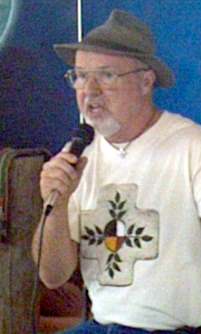 Myšlenka Richarda Rohra na Slavnost Ježíše Krista Krále - Kosmický Kristus Ve staletích bojů o lidství a božství Kristovo ztratila církev Západu postupně kontakt s širším a univerzálním poselstvím: „On je obraz Boha neviditelného, prvorozený všeho stvoření, neboť v něm bylo stvořeno všechno na nebi i na zemi … a všechno je stvořeno skrze něho a pro něho. On předchází všechno, všechno v něm spočívá, on jest …
Myšlenka Richarda Rohra na Slavnost Ježíše Krista Krále - Kosmický Kristus Ve staletích bojů o lidství a božství Kristovo ztratila církev Západu postupně kontakt s širším a univerzálním poselstvím: „On je obraz Boha neviditelného, prvorozený všeho stvoření, neboť v něm bylo stvořeno všechno na nebi i na zemi … a všechno je stvořeno skrze něho a pro něho. On předchází všechno, všechno v něm spočívá, on jest …
